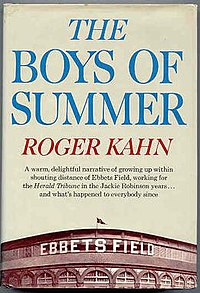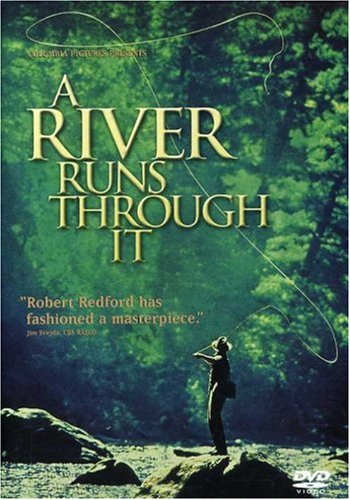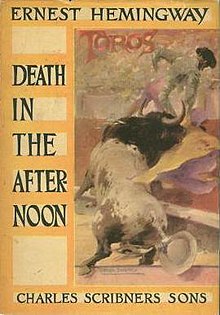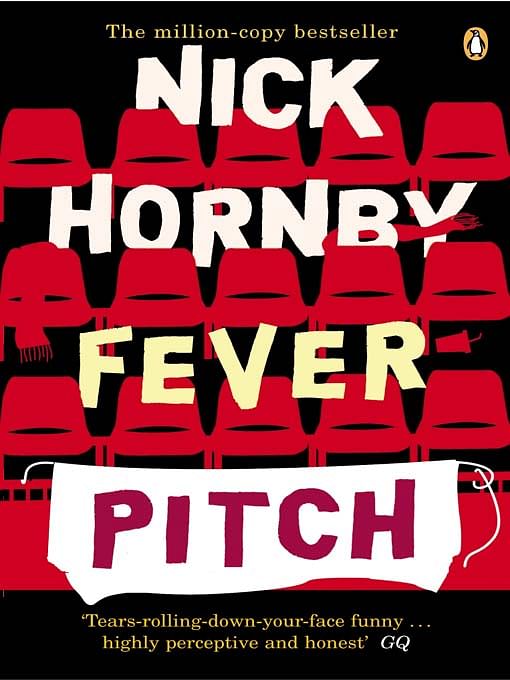I often give a talk to educators that
I call “Hemingway was a Sportswriter.” It’s mostly about how teachers can utilize
sports as a means of generating enthusiasm for reading and writing among
reluctant readers and writers. But the talk also might have been titled “In
Defense of Sports as Literature.”
I talk about how Ernest Hemingway patterned
himself after famous early 20th-century sportswriter Ring Lardner.
And Hemingway wrote about sports—skiing, jai-alai, big game hunting—for the rest
of his life. Death in the Afternoon
was about bullfighting. The Old Man and
the Sea, which won him a Pulitzer Prize, was a simple story about a
fisherman battling a fish. Hemingway tended to use sports as a metaphor, and he
found profundity in the action, the detail, the things other writers might have
missed. He found beauty in the precision of the hunt, grace in the movement of
the matador, a sort of ballet in the struggle between a fisherman and a marlin.
Books about sports can serve as
enlightenment disguised as entertainment. Sometimes it’s because a game or a
season or a sports can serve as the perfect structure for a riveting narrative.
And sometimes it’s because athletes or events can represent agents of change.
When you read a biography of Jackie Robinson or Joe Louis or Bill Russell,
you’re really reading a racial history of America. Arthur Ashe’s brilliant and
beautiful autobiography, Days of Grace,
is about a tennis player, sure. But it’s really about race and AIDS and privacy
and death and love.
It is no wonder that sports tends to
draw literary luminaries. Damon Runyan and James Michener started their careers
as sportswriters. John Grisham and Stephen King have each written a few books
about sports—long after reaching the point where they could write about anything they want. William Faulkner
wrote for Sports Illustrated. So did
Robert Frost and John Steinbeck.
So sports—which was so long derided as
the Toy Department of newspapers—has been the setting for many a literary
masterpiece. Sometimes really serious stuff. And sometimes not. Some fiction.
Some nonfiction. All brilliant. But I’m here to rank the best of the best—with
only one rule: One book per sport.
That rule leaves off some impressive
titles. Although it was a tough call, none of these football classics made the
cut: Paper Lion (George Plimpton), Everybody’s All-American (Frank Deford),
Semi-Tough (Dan Jenkins), and North Dallas Forty (Peter Gent). Neither did these two books about pro
basketball: Loose Balls (Terry Pluto)
and The Jordan Rules (Sam Smith). Nor
did these two golf tomes: Golf in the
Kingdom (Michael Murphy) and Ben
Hogan’s Five Lessons (Ben Hogan and Herbert Warren Wind). Even Days of Grace was edged out.
And baseball? That’s a genre unto
itself. Among the runners-up were The
Natural (Bernard Malamud), Shoeless
Joe (W.P. Kinsella), Moneyball
(Michael Lewis), You Know Me Al (Ring
Lardner), The Long Season (Jim
Brosnan), Bang the Drum Slowly (Mark
Harris), and Ball Four—although Jim
Bouton’s line in the latter may be my favorite of all: “You spend a good piece
of your life gripping a baseball and in the end it turns out that it was the
other way around all the time.”
What you will find here, though, are
books by folks like David Halberstam and John McPhee and Don DeLillo and Jon
Krakauer. And, although The Old Man and
the Sea took second place, I did include one from Hemingway. And yes, here
I’m categorizing fishing and mountain climbing and even bullfighting as sports.
There’s an argument to be made against that, of course—but not against the
books.
And by the way, the meaning of a book
can change with time—sometimes it changes with insight. Witness the final book
on the list…
1. FISHING: A River Runs Through It (Norman Maclean,
1976)
From the Village Voice: “A masterpiece. . . . This is more than stunning fiction:
It is a lyric record of a time and a life, shining with Maclean's special gift
for calling the reader's attention to arts of all kinds—the arts that work in
nature, in personality, in social intercourse, in fly-fishing."
2. MOUNTAIN
CLIMBING: Into Thin Air (Jon
Krakauer, 1997)
From Amazon.com: “Into Thin Air is a riveting first-hand account of a catastrophic expedition up Mount
Everest. In March 1996, Outside magazine sent veteran journalist and
seasoned climber Jon Krakauer on an expedition led by celebrated Everest guide
Rob Hall. Despite the expertise of Hall and the other leaders, by the end of
summit day eight people were dead. Krakauer's book is at once the story of the
ill-fated adventure and an analysis of the factors leading up to its tragic end…
As the journey up the mountain progresses, Krakauer puts it in context by
recalling the triumphs and perils of other Everest trips throughout history.
The author's own anguish over what happened on the mountain is palpable as he
leads readers to ponder timeless questions.”
3. BASEBALL: The Boys of Summer (Roger Kahn, 1971)
 From Sports Illustrated: “A baseball book the same way Moby Dick is a fishing book, this account of the
early-'50s Brooklyn Dodgers is, by turns, a novelistic tale of conflict and
change, a tribute, a civic history, a piece of nostalgia and, finally, a
tragedy, as the franchise's 1958 move to Los Angeles takes the soul of
Brooklyn with it. Kahn writes eloquently about the memorable games and the Dodgers'
penchant for choking -- "Wait Till Next Year" is their motto -- but
the most poignant passages revisit the Boys in autumn. An auto accident has
rendered catcher Roy Campanella a quadriplegic. Dignified trailblazer Jackie
Robinson is mourning the death of his son. Sure-handed third baseman Billy Cox
is tending bar. No book is better at showing how sports is not just games. “
From Sports Illustrated: “A baseball book the same way Moby Dick is a fishing book, this account of the
early-'50s Brooklyn Dodgers is, by turns, a novelistic tale of conflict and
change, a tribute, a civic history, a piece of nostalgia and, finally, a
tragedy, as the franchise's 1958 move to Los Angeles takes the soul of
Brooklyn with it. Kahn writes eloquently about the memorable games and the Dodgers'
penchant for choking -- "Wait Till Next Year" is their motto -- but
the most poignant passages revisit the Boys in autumn. An auto accident has
rendered catcher Roy Campanella a quadriplegic. Dignified trailblazer Jackie
Robinson is mourning the death of his son. Sure-handed third baseman Billy Cox
is tending bar. No book is better at showing how sports is not just games. “
4. HIGH
SCHOOL FOOTBALL: Friday Night Lights
(H.G. Bissinger, 1990)
From Amazon.com: “Secular religions are
fascinating in the devotion and zealousness they breed, and in Texas, high
school football has its own rabid hold over the faithful. H.G. Bissinger, a
Pulitzer Prize-winning journalist, enters into the spirit of one of its most
fervent shrines: Odessa, a city in decline in the desert of West Texas, where
the Permian High School Panthers have managed to compile the winningest record
in state annals. Indeed, as this breathtaking examination of the town, the
team, its coaches, and its young players chronicles, the team, for better and
for worse, is the town; the communal health and
self-image of the latter is directly linked to the on-field success of the
former… Written with great style and passion, Friday
Night Lights offers an
American snapshot in deep focus; the picture is not always pretty, but the
image is hard to forget.”
5. HOCKEY: The Game (Ken Dryden, 1983)
 From The New York Times: “Ken
Dryden’s memoir and extended meditation on goaltending, hockey, family and life
with the dynastic Montreal Canadiens, has justly earned a reputation as the
best book written about the sport, and perhaps any sport, in the English language…
Dryden
wrote “The Game” in his last season as a player before retiring at the tender
age of 31; it is remarkable that a writer that young could be so eloquent on
his first try as an author, given that he was usually otherwise engaged,
stopping pucks. But he was known as a thoughtful guy—he had taken a year off
from the Canadiens to complete his law degree at McGill University. And, sure
enough, after retirement he embarked on a peripatetic career as a thinker and
doer.”
From The New York Times: “Ken
Dryden’s memoir and extended meditation on goaltending, hockey, family and life
with the dynastic Montreal Canadiens, has justly earned a reputation as the
best book written about the sport, and perhaps any sport, in the English language…
Dryden
wrote “The Game” in his last season as a player before retiring at the tender
age of 31; it is remarkable that a writer that young could be so eloquent on
his first try as an author, given that he was usually otherwise engaged,
stopping pucks. But he was known as a thoughtful guy—he had taken a year off
from the Canadiens to complete his law degree at McGill University. And, sure
enough, after retirement he embarked on a peripatetic career as a thinker and
doer.”6. HORSERACING: Seabiscuit: An American Legend (Laura Hillenbrand, 2001)
From Sports Illustrated: “It’s a terrific story, but it’s more than just
a horse’s tale, because the humans who owned, trained and rode Seabiscuit are
equally fascinating… Hillenbrand not only ties… divergent personalities into a
fast-moving narrative but also shows an extraordinary talent for describing a
horse race so vividly that the reader feels like the rider. She writes about
the confusion, turbulence and artistry of a race with the same grasp of sound
and movement that Whitney Blliett brings to jazz in his New Yorker profiles. That is no mean accomplishment… Even if your
interest in horses goes no further than hansom cabs, you’ll find this book
engrossing.”
7. TENNIS: Levels of the Game (John McPhee, 1969)
From Life magazine: "McPhee has produced what is probably the best tennis book ever
written. On the surface it is a joint profile of… Arthur Ashe and Clark
Graebner (using a 1968 U.S. Open semifinal match as the narrative structure),
but underneath it is considerably more—namely, a highly original way of looking
at human behavior… He proves his point with consummate skill and journalistic artistry.
You are the way you play, he is saying. The court is life.”
8. BOXING: The Sweet Science (A.J. Liebling, 1956)
From Sports Illustrated: “Pound-for-pound the top boxing writer of all time, Liebling
is at his bare-knuckled best here, bobbing and weaving between superb reporting
and evocative prose. The fistic figures depicted in this timeless collection of New Yorker essays range from champs such as Rocky
Marciano and Sugar Ray Robinson to endearing palookas and eccentric cornermen
on the fringes of the squared circle. Liebling's writing is efficient yet
stylish, acerbic yet soft and sympathetic. ("The sweet science, like an
old rap or the memory of love, follows its victims everywhere.") He
leavens these flourishes with an eye for detail worthy of Henry James. The
one-two combination allows him to convey how boxing can at once be so repugnant
and so alluring.”
9. STREET
BASKETBALL: Heaven is a Playground
(Rick Telander, 1976)
 From Dime Magazine: “If you want a book
concerned solely with the game, Telander’s description of a 1970s summer in New
York City is the perfect mate. Whereas other great hoop books get their
excitement from reading about icons or memorable teams, this book focuses on
the childlike innocence of the game itself. Telander captures the essence of
the street because much of the conversation in the book is embedded in slang
and playground talk. Whereas many books are clouded with too much research that
sometimes breaks up the presence of setting, Heaven never widens the scope.”
From Dime Magazine: “If you want a book
concerned solely with the game, Telander’s description of a 1970s summer in New
York City is the perfect mate. Whereas other great hoop books get their
excitement from reading about icons or memorable teams, this book focuses on
the childlike innocence of the game itself. Telander captures the essence of
the street because much of the conversation in the book is embedded in slang
and playground talk. Whereas many books are clouded with too much research that
sometimes breaks up the presence of setting, Heaven never widens the scope.”
10. GOLF: The Golf Omnibus (P.G. Wodehouse, 1973)
From Amazon.com: “If on the links you would deride
a driving nor'easter as ‘Scots mist,’ if you admire beaus who embrace their
girls with the interlocking grip, if you would chip into a rowboat and row
across the bay to save a few strokes on ‘The Longest Hole,’ if you think ‘Those
in Peril on the Tee’ is a wonderful story title, if you love stalwart heroes
wielding mashie niblicks and cleeks and who can't abide tennis players, if you
want to know the origin of many golf expressions, including ‘The Pro’ or want
to know how best to rhyme ‘putter’ in a paean to the king (see ‘The Coming of
Gowf’), if you think a best ball match would be an efficient way to sort out
star-crossed lovers, get this book!”
11. PRO FOOTBALL: Instant Replay (Jerry Kramer and Dick Schaap, 1968)
 From
Sports Rapport: “Instant Replay, the diary of the
1967 Packers season by Jerry Kramer and Dick Schaap, is a testament to what can
happen when outstanding candor and beautiful writing converge with outrageously
fortuitous luck. What begins as an arduous challenge for Kramer to persevere
through yet another torturous Vince Lombardi training camp culminates in the
Packers’ triumph in the Ice Bowl–on a final-minute Bart Starr quarterback sneak
for a touchdown where Kramer threw the key block–and, somewhat
anti-climatically, the Packers’ Super Bowl II victory over the Raiders. For
insight into the daily preparation and psyche of a football player, football
coach, and football team alone, Instant Replay would be an exceptional read. That
it captures one of the most heralded plays in NFL history, however, leads its
relevance to endure more than 40 years later.”
From
Sports Rapport: “Instant Replay, the diary of the
1967 Packers season by Jerry Kramer and Dick Schaap, is a testament to what can
happen when outstanding candor and beautiful writing converge with outrageously
fortuitous luck. What begins as an arduous challenge for Kramer to persevere
through yet another torturous Vince Lombardi training camp culminates in the
Packers’ triumph in the Ice Bowl–on a final-minute Bart Starr quarterback sneak
for a touchdown where Kramer threw the key block–and, somewhat
anti-climatically, the Packers’ Super Bowl II victory over the Raiders. For
insight into the daily preparation and psyche of a football player, football
coach, and football team alone, Instant Replay would be an exceptional read. That
it captures one of the most heralded plays in NFL history, however, leads its
relevance to endure more than 40 years later.”
12. COLLEGE
FOOTBALL: End Zone (Don DeLillo,
1972)
From Amazon.com: “The story of an
angst-ridden, war-obsessed running back for Logos College in West Texas, End Zone is a heady and hilarious conflation of
Cold War existentialism and the parodied parallelism of battlefield/sports
rhetoric. When not arguing nuclear endgame strategy with his professor, Major
Staley, narrator Gary Harkness joins a brilliant and unlikely bunch of
overmuscled gladiators on the field and in the dormitory. In characteristic
fashion, DeLillo deliberately undermines the football-is-combat cliché by
having one of his characters explain: "I reject the notion of football as
warfare. Warfare is warfare. We don't need substitutes because we've got the
real thing." What remains is an insightful examination of language in an
alien, postmodern world, where a football player's ultimate triumph is his need
to play the game.”
13. PRO BASKETBALL:
The Breaks of the Game (David
Halberstam, 1981)
 From Dime Magazine: “Focusing on the late 1970s Portland Trail Blazer
squads that directly followed the team that won a title behind Bill Walton,
Halberstam attacks the intimate details with a ferocious appetite… Walton is
probably the most accomplished player who’s heavily involved. But it doesn’t
matter. No single player occupies too much of the reader’s time and all of the
characters, no matter how small, are given chances to tell their stories. By
its conclusion, this book crafted dozens of full, three-dimensional people.”
From Dime Magazine: “Focusing on the late 1970s Portland Trail Blazer
squads that directly followed the team that won a title behind Bill Walton,
Halberstam attacks the intimate details with a ferocious appetite… Walton is
probably the most accomplished player who’s heavily involved. But it doesn’t
matter. No single player occupies too much of the reader’s time and all of the
characters, no matter how small, are given chances to tell their stories. By
its conclusion, this book crafted dozens of full, three-dimensional people.”
14. COLLEGE
BASKETBALL: A Season on the Brink
(John Feinstein, 1986)
From Booklist: “Despite his
feelings toward the press generally, (Indiana University coach Bob) Knight
granted Washington Post reporter Feinstein total access to his
team, his staff, and himself during the 1985–86 season. It was a year in which
Knight felt his coaching methods were at stake as much as his winning
percentage. Feinstein capitalized wonderfully on the opportunity. This is the
best sports book of the year, maybe of many years. It captures the dynamics of
Knight’s interaction with his players so vividly that the reader feels like
part of the team. Feinstein effectively cuts through Knight’s public personas—the
revered god and the despised devil—to reveal a complex man who is occasionally
hateful and sometimes lovable.”
From The New York Times: “Bull-fighting is… presented as an art heightened by the
presence of death and, if the spectator can project himself into the matador's
place, in the terror of death. For even the best matadors have their moments of
fear—even their days and seasons of fear. The book is thus not only a careful,
even a meticulous explanation of the way bull-fighting is done, but is also a
picturing of the spirit in which it is done and seen.”
16. FIGURE SKATING:
Inside Edge (Christine Brennan, 1996)
From Publishers Weekly: “Here (Brennan) follows the season from October 1994 to the
Nationals held the following February, concentrating largely on the likely
stars of tomorrow. Of course she touches on the Tonya Harding-Nancy Kerrigan
imbroglio and the arrest of U.S. champ Nicole Bobek on a burglary charge (later
dismissed), but she is less interested in scandal than in showing how a year's
work and tens of thousands in parental dollars can be lost by a couple of
missteps in a single four-minute program. She demonstrates how the homosexuality
of many—perhaps most—of the men in the sport is covered up, how quixotic the
judging is and how the sport is becoming more like tennis as it attracts
younger participants and more high-powered agents.”
17. SOCCER: Fever Pitch (Nick Hornby, 1991)
From Sports Illustrated: “How can the rest of the world summon such passion for soccer?
You'll understand after reading Hornby's deeply personal and wonderfully witty
account of an otherwise normal bloke who develops a full-blown obsession with
Arsenal, the English Premier League team.”
18. STOCK CAR
RACING: American Zoom (Peter Golenbock, 1993)
From Library Journal: (Golenbock) offers this oral history of stock car racing from
its crude beginnings as a contest among Southern bootleggers to its present
status as a billion-dollar industry. The author wisely employs an oral history
format to relate the background of this sport, and the technique best suits the
subjects: jovial men with colorful personalities and nicknames, fondly
remembering the "good old days." All the great names of stock car
racing are here, from Richard Petty to Smokey Unick, from Bill France to Junior
Johnson, from Bill Elliott to Dale Earnhardt.”
19. HIGH SCHOOL
BASKETBALL: In These Girls, Hope is a
Muscle (Madeleine Blais, 1995)
 From Publishers Weekly: “When
Pulitzer Prize-winner Blais pokes gentle fun at Amherst, Mass., where an
infuriated teen-aged athlete in the heat of the fray may yell, ‘You ignore your
inner child!’ you suspect this will be a special book. And it is, as the reader
follows the Amherst High girls basketball team-the Lady Hurricanes-in the
1992-93 season, from game one on December 15 to the final game on March 16,
when they all but obliterated Haverhill, 74-36, to win the state championship.
While this is the story of well-bred, upper-middle class, genteel girls who
learned to be tough, it is also a picture of a changing period in American
sports history, when a town rallied around its female athletes in a way that
had previously been reserved for males.”
From Publishers Weekly: “When
Pulitzer Prize-winner Blais pokes gentle fun at Amherst, Mass., where an
infuriated teen-aged athlete in the heat of the fray may yell, ‘You ignore your
inner child!’ you suspect this will be a special book. And it is, as the reader
follows the Amherst High girls basketball team-the Lady Hurricanes-in the
1992-93 season, from game one on December 15 to the final game on March 16,
when they all but obliterated Haverhill, 74-36, to win the state championship.
While this is the story of well-bred, upper-middle class, genteel girls who
learned to be tough, it is also a picture of a changing period in American
sports history, when a town rallied around its female athletes in a way that
had previously been reserved for males.”
20. GYMNASTICS: Little Girls in Pretty Boxes (Joan Ryan,
1995)
From School Library Journal: “In an attempt to focus attention on the high price paid
through pain, pressure, and humiliation to become an Olympic champion, Ryan has
researched the stories behind some of the young female superstar gymnasts and
figure skaters. The extraordinary cost to these young women in body, mind, and
spirit is dramatized through the intense subculture dominated by gyms,
trainers, parents, and sports officials who press for excellence and success
without regard to the health and well-being of those involved. This anecdotal
account serves as a warning to all those engaged in competitive sports that
children should not be sacrificed to adult egos and the thrills of victory.”
21. CRICKET: Beyond the Boundary (C.L.R. James, 1963)
From Sports Illustrated: “The Trinidadian Marxist's cricket-drenched memoir is equal
parts sports, history and philosophy. American readers will need to bone up on
the game (the 1983 U.S. edition has a four-page primer), but James' musings on
culture and colonialism are worth the effort.”
22. WRESTLING: Whatever Happened to
Gorgeous George (Joe Jares, 1974)
From Sports Illustrated: “An affectionate depiction of pro wrestling in the
1940s, '50s and '60s, when the sport had a more benign, vaudevillian flavor.
Jares does a terrific riff on the masked men, ersatz Indian chiefs, ‘leaping
lords’ and other baddies who routinely smuggled ‘foreign objects’ in their
trunks.”
From Amazon.com: “People around the world
have found inspiration in the story of Lance Armstrong—a world-class athlete
nearly struck down by cancer, only to recover and win the Tour de France, the
multiday bicycle race famous for its grueling intensity. Armstrong is a
thoroughgoing Texan jock, and the changes brought to his life by his illness
are startling and powerful, but he's just not interested in wearing a hero suit…
It's Not About the Bike is
the perfect title for this book about life, death, illness, family, setbacks,
and triumphs, but not especially about the bike.”






But Armstrong "accomplished" these things while doping.
ReplyDelete